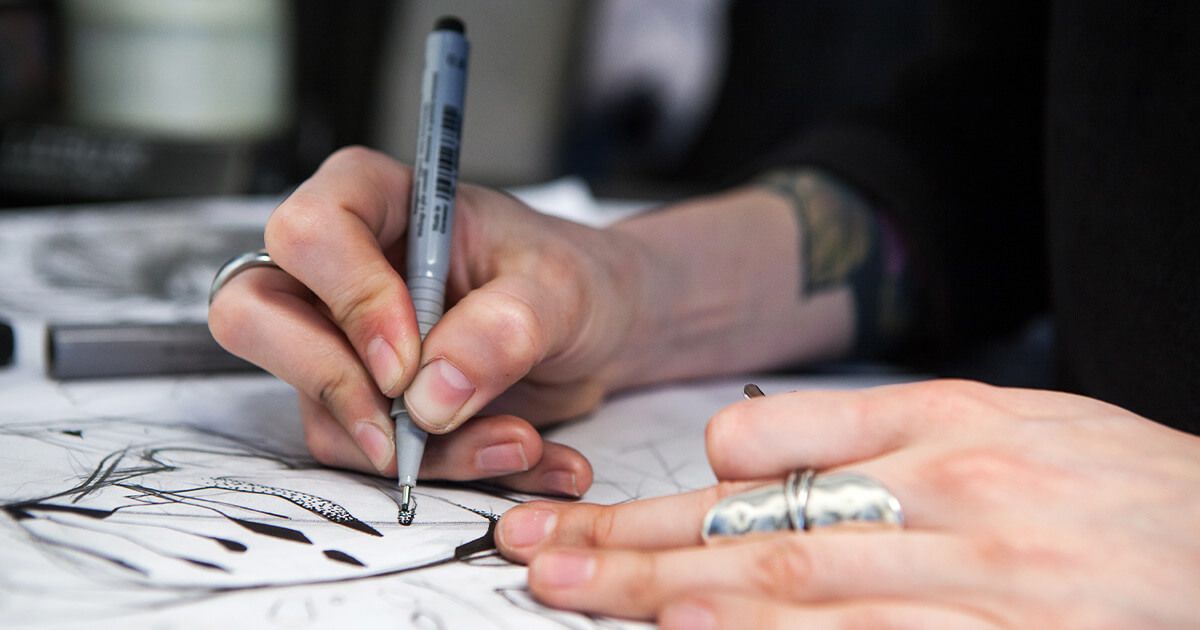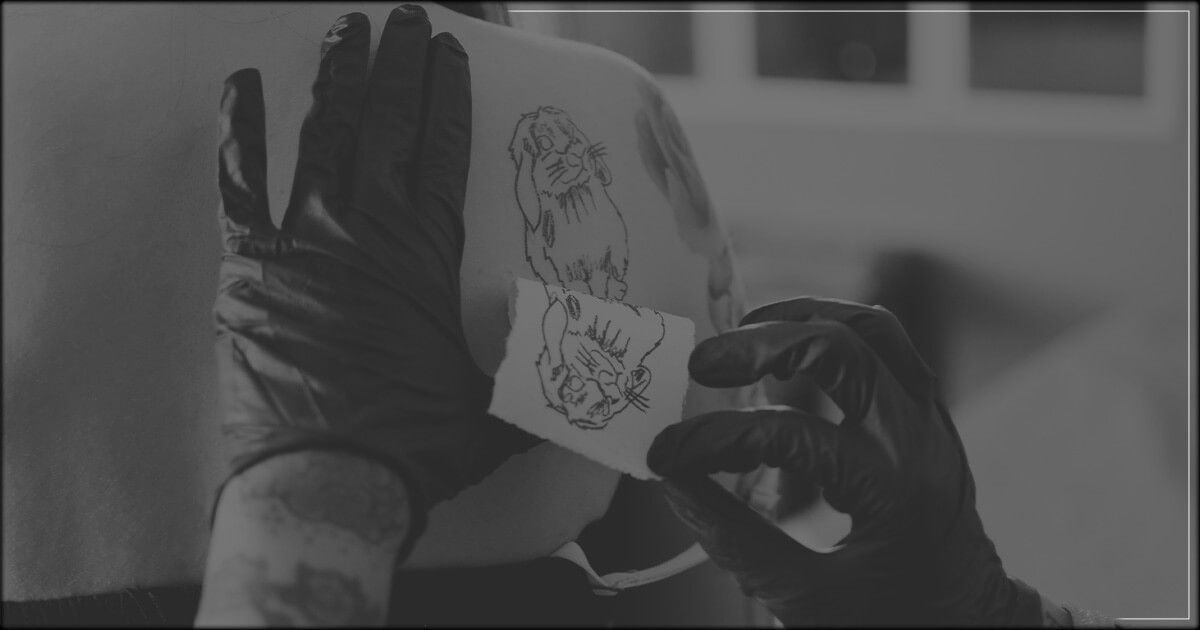
If you were to say a tattoo artist wasn’t a real artist, you’d get more than a few choice looks. While tattooing may not be a “traditional” form of art, it doesn’t take away from the fact that taking a sketch to skin is a feat most people can’t even conceptualize.
In fact, many of us don’t truly understand the process of developing the idea of a tattoo, let alone what it takes to make it a permanent fixture on someone’s body. Today, we’re going to explore what it takes to bring sketch to skin with the help of the pros from Perfect Image – tattoo artists of the highest caliber.
Perfect Image takes art quite seriously across our locations, from Kitchener-Waterloo to Brantford, London, Barrie, and Banff. But just as art expands over many genres, so do the artists' processes that take concepts to permanent forms of body art.
Let’s explore how a tattoo artist takes an idea and turns it into a masterpiece:
HUMBLE BEGINNINGS
When it comes to sketching tattoos, it's easy to assume the process is only a few simple steps when you're watching a professional scratch away at a slip of paper.
However, what is happening is that an artist is developing a piece of work based on self-expression combined with someone else's vision; based on an art form that has been practiced worldwide since the Neolithic times, from the time of mummies and memories lost.
The ancient art of tattooing has been found in archaeological records that suggest it's been practiced since the Upper Paleolithic period in Europe.
Today, tattoos are an enduring form of self-expression that allows people to showcase their personalities, as well as commemorate something meaningful through captivating imagery.

THE CONSULTATION
The first step to developing a tattoo starts with a simple conversation.
Typically, clients will choose a tattoo artist based on their unique artistic style and come in with a concept of what they want. Whether this is an image they found online or if they have an idea in mind, a conversation about expectations and desires has to happen before any pens are put to paper.
Each tattoo studio is going to be different, but generally speaking, booking a tattoo consultation is like booking any other appointment. You're generally required to bring proof of identification to prove you are of age, as well as a general idea for a design and the area where you'd like the tattoo to be placed. However, the artist will help you size the tattoo and select a final location when you're there in person. From there, the artist will put a placement photo on your desired location.
There are general topics of discussion that may come up in terms of colour, style, size, or any necessary modifications to the design to achieve your ideal outcome.
Whether you get your tattoo that same day or choose a different date and time, it’s important that you’re happy with the final design and placement of your tattoo. Once you have a concept, the tattoo artist generally takes time to draw up a sketch of the final product based on their stylistic approach along with your requests. Once you agree on a design and location, the tattoo artist can get to work.
THE STENCIL
Tattoo artists create stencils with what some might call a "flow" - flow refers to the way a design FLOWS with a client's body, meaning the design follows the lines and curves of their frame. This ensures that the tattoo is more dynamic (because it moves with the client's body) and gives a much better aesthetic by fitting the client's overall frame.
Once the design is finalized, a stencil is made and matched to fit this flow with the body. It's a transferable guide for the tattoo and acts as the starting place for the tattoo artist. The tattoo artist may shave the area, depending on the client, and will then disinfect the skin before they place the stencil and line it up to the desired symmetry. The client will have a chance to view the design and placement of the stencil before the process begins.
SETTING UP THE WORKSTATION
Any reputable tattoo studio needs to ensure that everything is completely sterile to minimize the risk of infection.
This can include setting up the workstation, sterilizing all of the equipment, prepping the ink, and making sure everything is clean and within reach. Tattoo needles, ink, and machines should be in good condition, sterilized, and high quality to ensure safety and the best possible results.
The artist will then get into the best and most comfortable position while also positioning the client in kind to make sure both parties are prepared to sit for potentially several hours while the artist works. Depending on the size of the studio, a client can generally have one person sit in on their session if they need the support. However, it's important to inquire about this ahead of time.

THE TATTOO SESSION
The actual session is when the magic truly happens. Now it's time to take the stencil and turn it into a permanent piece of body art.
Once the client is comfortable, the artist will begin the actual tattooing process. Tattoo machines use needles to deposit ink down into the second layer of skin (or dermis). The needles move very quickly, puncturing the skin and depositing the ink to create several pigmented deposits that make up the entire design of the tattoo.
Depending on what you're having tattooed, this process can take up to several hours and even several sessions to get the desired look of the design. If you require more than one session, your first session could include the outline of the design while a second session could include colour and/or shading. However, the artist will inform the client on what to expect in terms of time.
We can't talk about the tattooing process without discussing tattoo pain management. As mentioned, tattooing is a needle continuously puncturing the skin, which can definitely be painful. However, several factors can affect a person's pain tolerance; from placement to muscle/fat mass.
Luckily, there are things you can do to help manage pain ranging from breathing techniques, having a person present for moral support, to making sure you're hydrated to avoid light-headedness. An artist can allow a client to listen to music (via headphones) as a distraction or may even offer a numbing cream to help manage the pain.
If necessary, an artist can also let the client take breaks and may even break up a session into multiples if the pain is too much.
Once the tattoo is completed, you’ll have the opportunity to review the final product. The tattoo artist will then give you detailed instructions on how to care for the tattoo after your appointment. Typically, you’ll receive both verbal and written instructions on how to take care of the tattoo to ensure the best quality product after the healing process concludes.
Here’s a detailed breakdown of what to generally expect during the aftercare process:
Initial Tattoo Aftercare (Day 1):
- Come home with dressing over the tattoo.
- Wait for the artist's instruction on when to remove the dressing.
- Expect oozing fluid (blood, plasma, ink) and redness/soreness.
- Wash hands thoroughly before removing the dressing.
- Pat skin dry and apply the recommended ointment or lotion.
Days 2–3:
- The tattoo may appear duller/cloudier as the skin heals.
- Scabs may form; after day 2, wash the tattoo once or twice a day using Cetaphil.
- Ink may run into the sink during washing.
- Allow skin to dry before applying the recommended ointment or lotion.
Days 4–6:
- "Second skin" is typically removed during this time.
- Clean the area under water while peeling back the adhesive.
- Avoid picking at scabs; they may be raised but should not be thick.
- Wash the tattoo once or twice a day apply ointment or lotion as needed.
- Any redness should start to fade.
Days 6–14:
- Scabs will begin to harden and flake off naturally.
- Avoid picking at scabs to prevent pulling out ink and scarring.
- Skin may feel itchy; use fragrance-free, alcohol-free moisturizer.
- If the tattoo remains red and swollen, consult a tattoo artist or healthcare professional for possible infection.
TURNING IDEAS INTO MASTERPIECES
Tattoos typically look different after the healing process is completed and largely depend on how you take care of your skin and how it reacts to the ink. It's important to understand that the appearance of tattoos will change over time; generally, tattoos appear brighter and much more vibrant when they're first completed.
But as your skin heals and the ink begins to settle into your skin, the colours are prone to fading slightly and the lines can appear as if they're slightly blurred. It also depends on the quality of the tools and ink used by the artist, so it's important to do your research beforehand. Luckily, tattoos can be touched up as needed, but generally speaking, a slight loss in colour or slight blurring isn't anything to be too concerned about.
